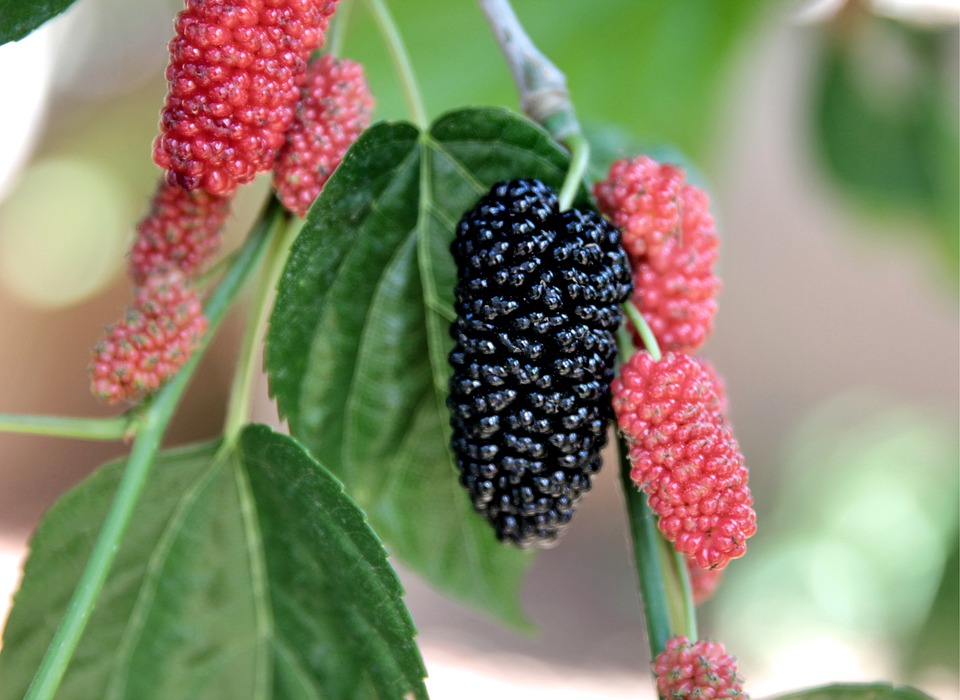
“Mulberry” redirects here. For other plants called mulberry, see List of plants known as mulberry. For other uses, see Mulberry (disambiguation).
Morus, a genus of flowering plants in the family Moraceae, comprises 10–16 species of deciduous trees commonly known as mulberries, growing wild and under cultivation in many temperate world regions.[1]
The closely related genus Broussonetia is also commonly known as mulberry, notably the paper mulberry, Broussonetia papyrifera.[2]
Mulberries are fast-growing when young, but soon become slow-growing and rarely exceed 10–15 metres (30–50 ft) tall. The leaves are alternately arranged, simple and often lobed and serrated on the margin. Lobes are more common on juvenile shoots than on mature trees.[citation needed] The trees can be monoecious or dioecious.[3][4] The mulberry fruit is a multiple fruit, approximately 2–3 cm (3⁄4–1 1⁄4 in) long. Immature fruits are white, green, or pale yellow. In most species the fruits turn pink and then red while ripening, then dark purple or black, and have a sweet flavor when fully ripe. The fruits of the white-fruited cultivar are white when ripe; the fruit of this cultivar is also sweet, but has a mild flavor compared with darker varieties.[citation needed] Although quite similar looking, they are not to be confused with blackberries.
